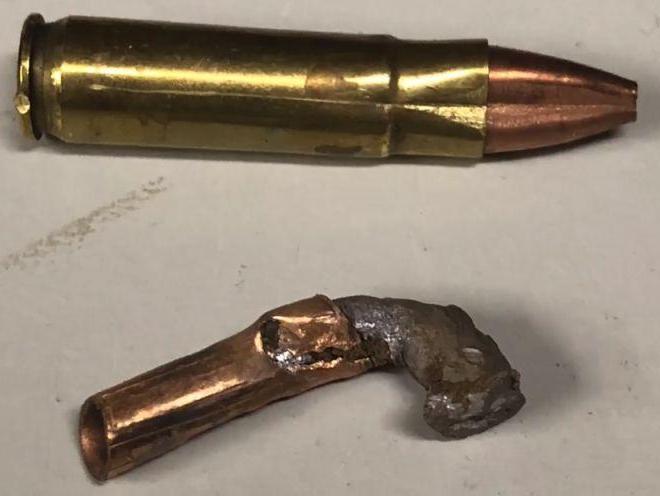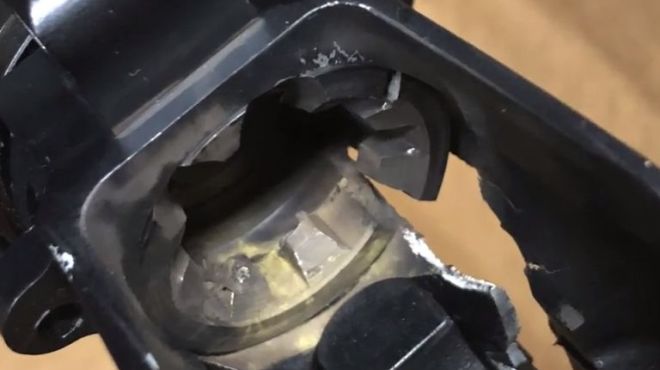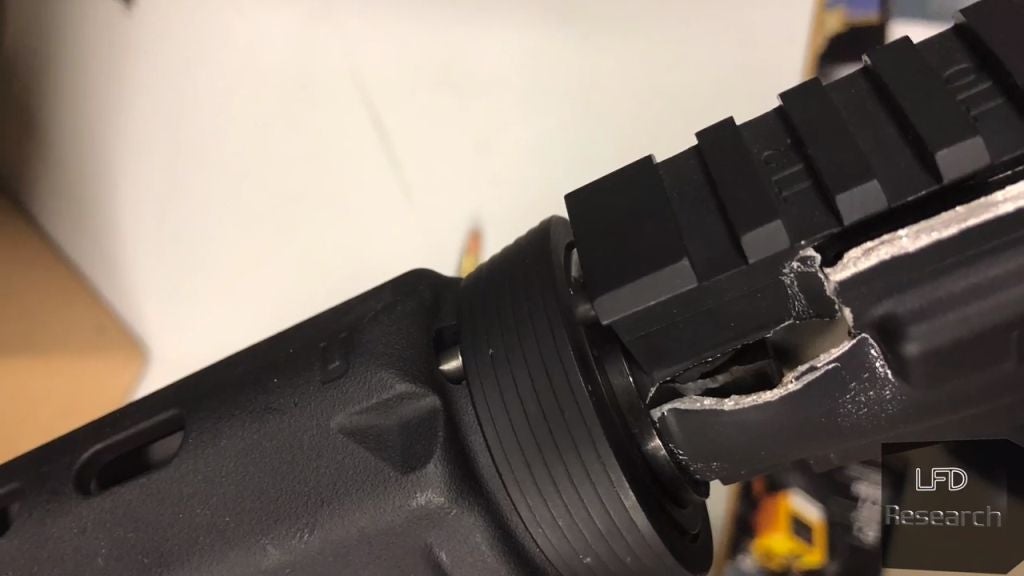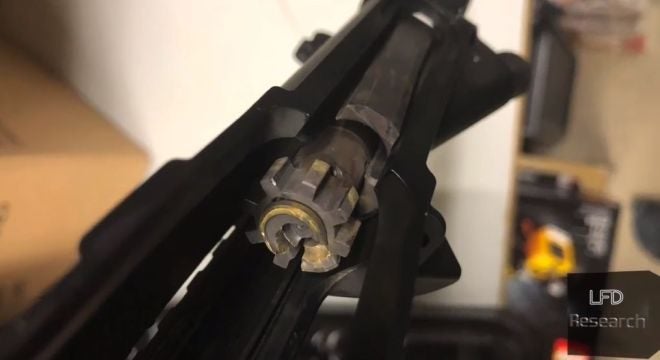The Internet is full of images of destroyed 5.56/223 AR-15 rifles that were accidentally loaded with a .300 Blackout round. It is not the best idea to try to push a .30 caliber bullet through a .22 caliber bore, is it? Of course, in the majority of cases, these are accidents that result in completely ruined firearms and even injuries to the shooters. In order to see what happens with the rifle in such a situation, LFD Research simulated it by chambering a .300 Blackout round into a 5.56 AR-15 and filming it in slow motion. Let’s watch their video.
As you can see, it is literally a catastrophic failure resulting in destroyed upper and lower receivers, magazine, barrel extension, bolt carrier, bolt etc. Interestingly enough the bullet actually left the barrel being swaged into the bore and pushed through it as if it was shot in a squeeze bore.

On top, you can see the deformed round that was in the magazine. Below is the bullet of the fired round. The bullet was swaged into .22 caliber. Note also that the lead core was squeezed forward from the open tip of the bullet. If it was an FMJ or solid bullet, the projectile would probably be stuck in the bore.
The .300 AAC Blackout cartridge has a lot of great features that made it so popular. It has rim dimensions and overall length identical to .223 Remington making it possible to convert AR-15 rifles into this caliber basically in a matter of a barrel change. The cartridge is also quite a versatile one. For example, it can be loaded to pretty much duplicate the 7.62x39mm performance or can take heavy subsonic projectiles making it perfect for a suppressed rig. Such flexibility makes it useful for multiple different applications: home defense, hunting, military and law enforcement … you name it. However, this cartridge has one major drawback. Yes, you guessed it – it can be chambered in a 5.56 chamber. Now, of course, you can argue that it is not the cartridge’s but shooter’s failure and one should be careful not to mix any rounds, however, accidents happen.

The destroyed barrel extension
The reason why this happens is that some bullets will have a shape that will get stuck in the neck of a 5.56 chamber creating an artificial headspace and perfectly aligning the rim of the .300 Blackout case to the .223/5.56 bolt face. Theoretically speaking, even if the bullet shape is “right” the .300 Blackout case can headspace off of the extractor.

As the host of LFD Research video said, NEVER try to replicate this experiment. Also, always be sure that you are using the right ammunition for your firearm.
Images by LFD Research
 Your Privacy Choices
Your Privacy Choices
